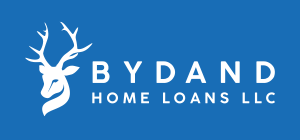
How to Pay Off Debt
5 Key Tips to Paying Off Debt:
Are you struggling to make headway on your debt? You’re not alone. In fact, according to a study by the Federal Reserve, the average American household has more than $7,000 in credit card debt. If you’re trying to pay off debt, there are a few key things you can do to make the process easier and faster. Read on for five tips that will help you get out of debt for good.
Know your debt strategy:
The first step to paying off debt is to develop a strategy. Ask yourself how much you have, what interest rates you’re paying, and what you can realistically afford to pay each month. Once you have this information, you can start to develop a plan of attack. If you have high-interest debt, for example, you may want to focus on paying that off first. Or, if you have multiple debts with different interest rates, you may want to focus on paying off the one with the highest rate first. Whichever route you choose, it’s important to have a plan so that you can stay focused and on track.
Stay on top of your budget:
In order to make headway on your debt, you need to be aware of your spending patterns. Track where you are spending your money each month and see where you can cut back. There’s no magic number for how much you should save each month, but knowing where your money is going is a good place to start. Once you have a better handle on your budget, you can start redirecting that money towards paying down your debt.
Make more than the minimum payments:
When it comes to paying off debt, making more than the minimum payment is key. The minimum payment is typically just enough to cover the interest on your loan or credit card balance - which means that if all you ever pay is the minimum, your balance will never go down! Try setting up automatic payments so that you’re always making at least a little bit extra each month; this will help reduce your overall balance more quickly.
Use any extra money wisely:
Anytime you get a windfall - a tax refund, bonus at work, or inheritance - it’s tempting to spend it right away. But if you’re trying to pay down, it’s wise to use that extra money wisely. One option is to put it towards your monthly payments so that you can make even more progress; another option is to use it as a buffer in case of tough months so that you don’t fall behind in your payments; yet another option is using it as seed money for starting a Debt Snowball (more on that below). Whatever route you choose, be intentional about how you use extra money so that it really works for you rather than against you.
Consider using the Debt Snowball approach:
The Debt Snowball approach is a method of paying off debt in which you focus on paying off your smallest debts first while making only minimum payments on your larger debts. Once the smallest debts are paid off, you “snowball” the amount of money you were putting towards those payments into paying off your next smallest debts - and so on until all your debts are paid off in full! This method can be effective because it helps show progress quickly, - and progress is key to staying supportive of the long-term goal of becoming debt-free!
Bottom Line:
If you’re struggling with paying off debt, you’re not alone. But by knowing your debt strategy, staying on top of your budget, and making more than the minimum payments you can make headway on your goal in becoming debt free! By following the five tips given in this blog post. You’ll be well on your way to reclaiming control of your finances and gaining financial freedom! If you’re ready to start consolidating click the button below to schedule a call with an experienced mortgage advisor today!

